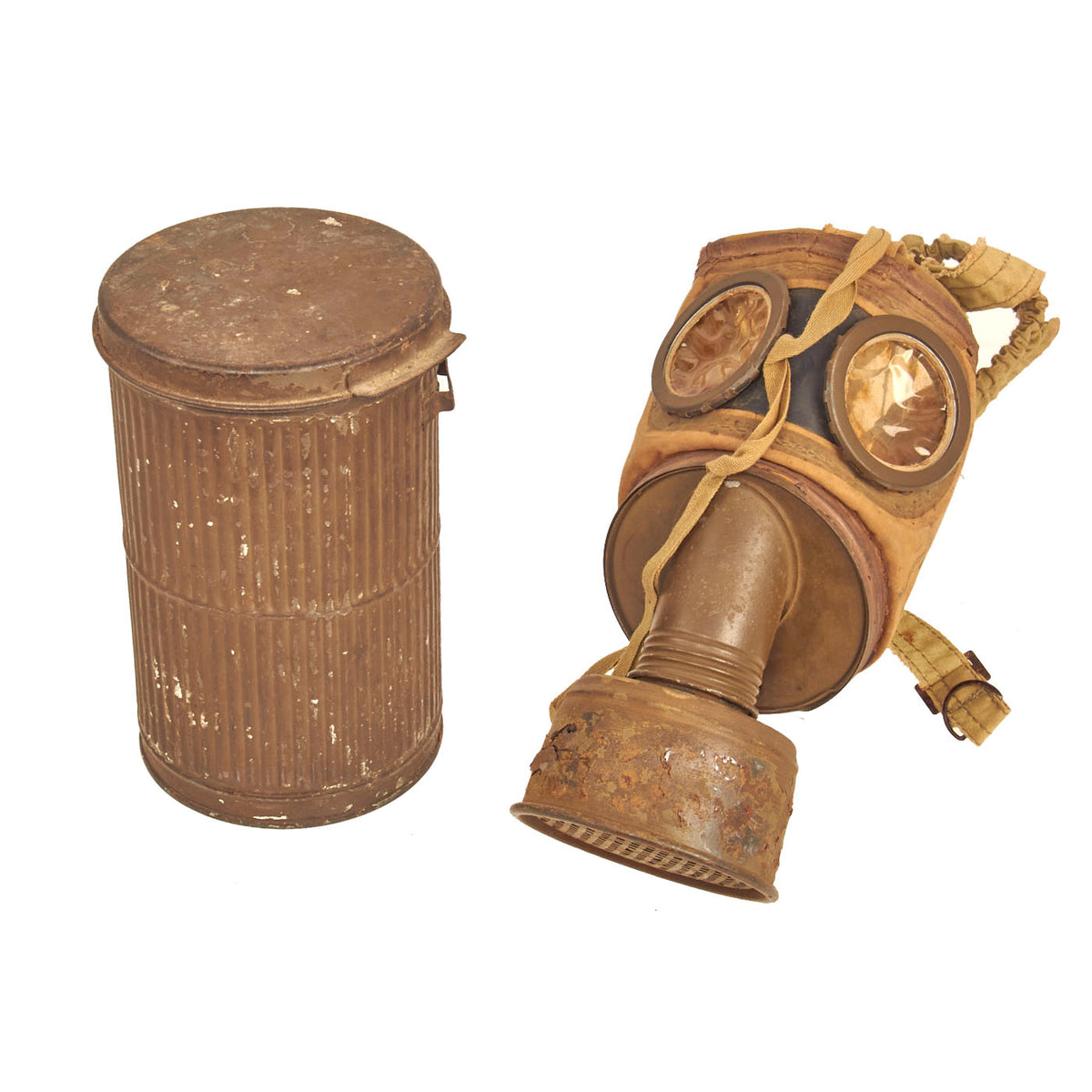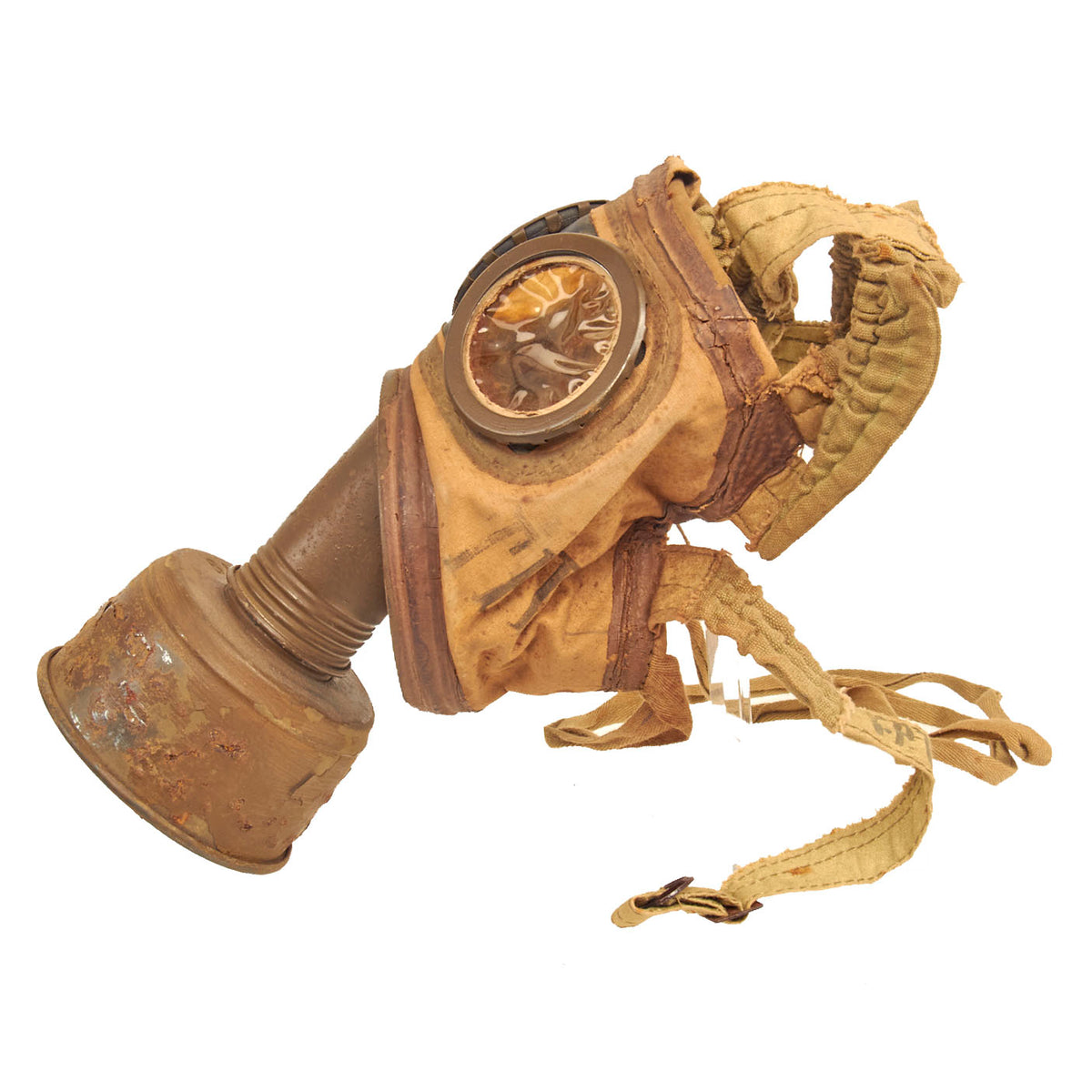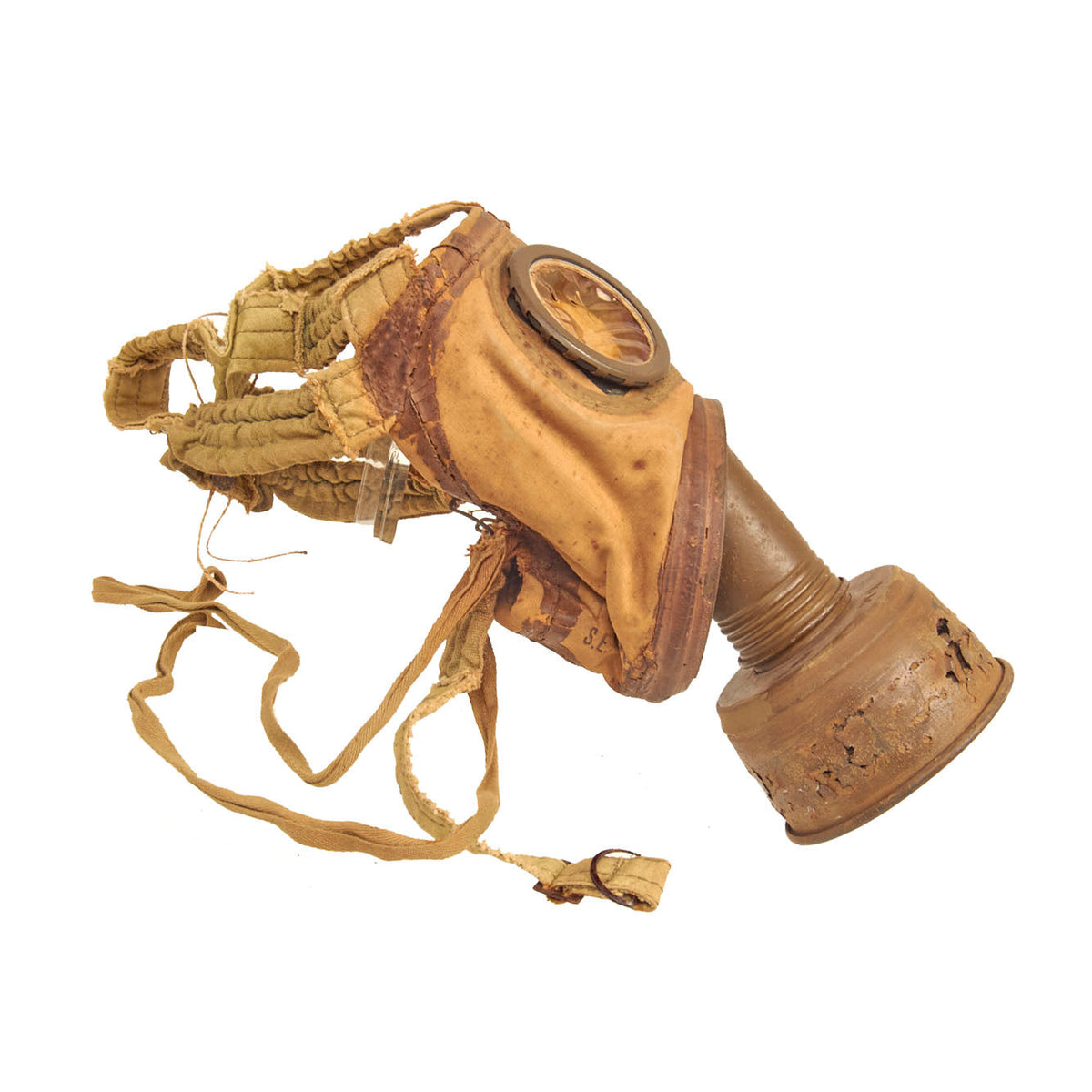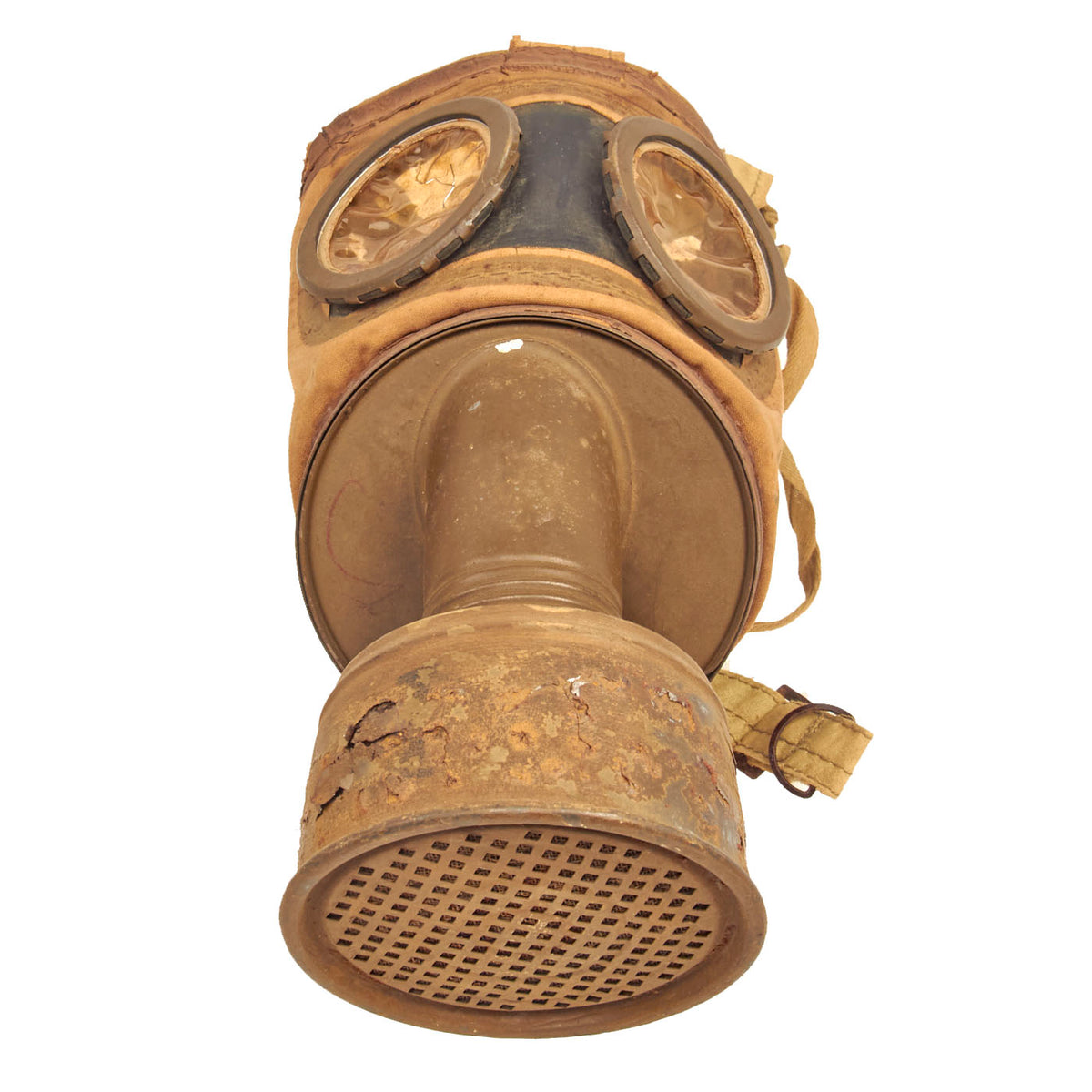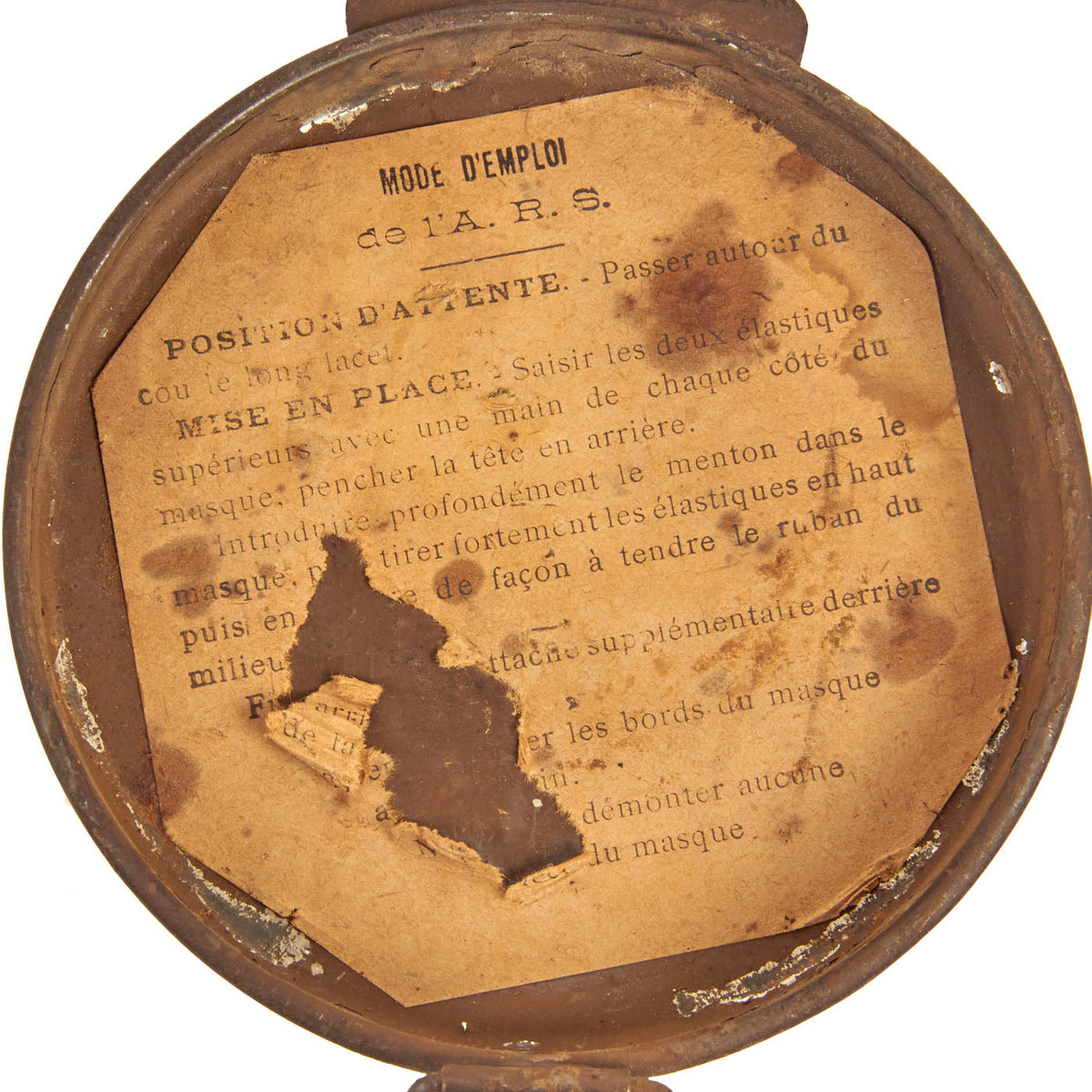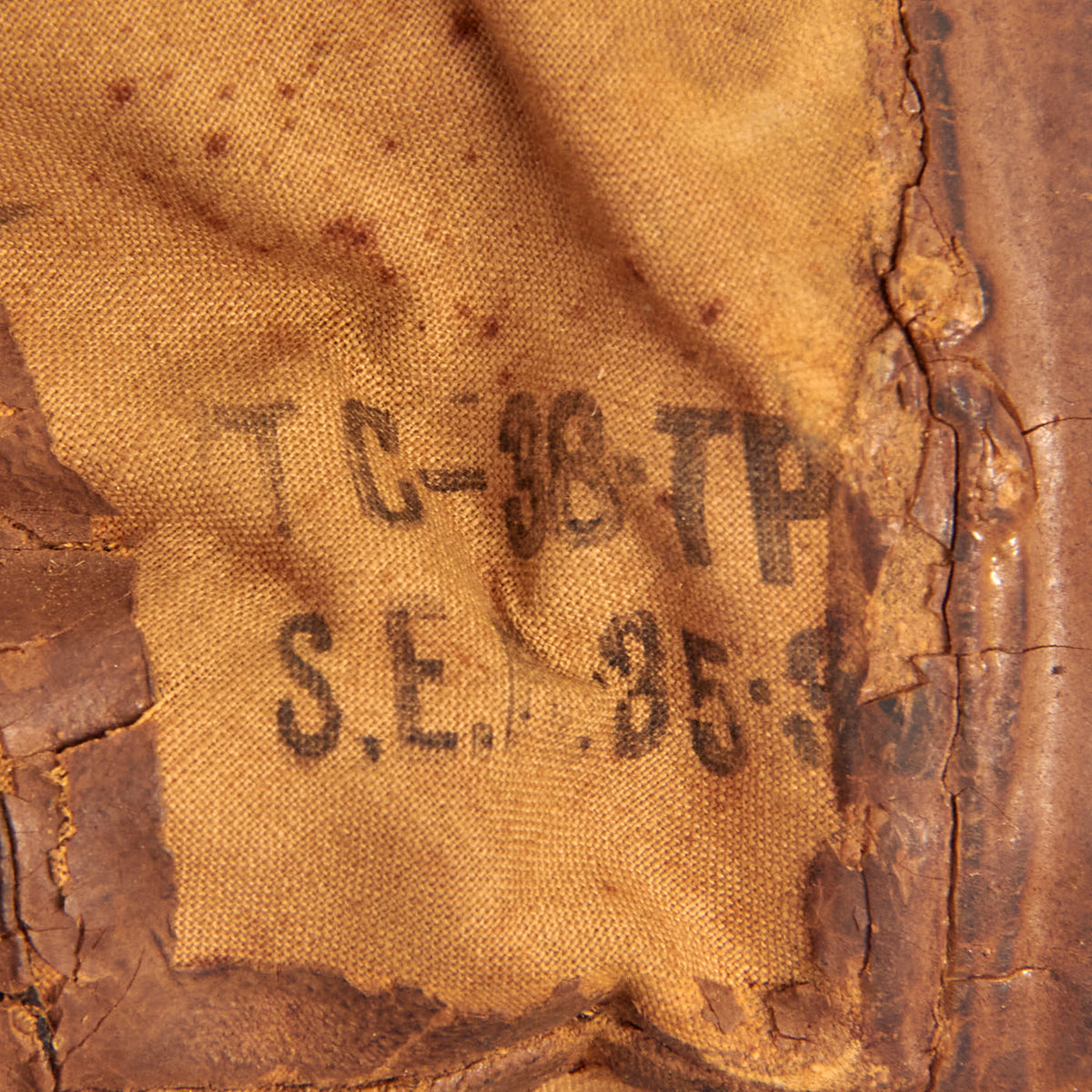Original French Pre-WWII TC-38 Civil Defense Gas Mask With A.R.S. Canister – Civilian Variant of the ANP T-31 Original Items
$ 295,00 $ 118,00
Original Item: Only One Available. At the end of World War I, the high number of civilian casualties highlighted the need to upgrade the protection of people during conflicts.
In 1933, the first voluntary organization to protect civilians during war time was founded with the support of Gaston Doumergue, a French politician of the Third Republic. In 1938, at the dawn of World War II, the French government developed civil defense (défense passive) policies. Their goal was to build blast shelters and warning networks to keep people safe from airstrikes.
After the war, the défense passive missions became more and more related to non military threats like natural disasters. In 1951, a national service for civil protection in the ministry of the Interior was established. This government agency then became the French Sécurité Civile in 1975.
However, this nationalization did not hamper volunteering which developed through local civil protection societies from 1958.
This TC-38 is similar in construction and appearance to the WWI Appareil Respiratoire Spécial ARS and the WWII Appareil Normal de Protection Type-31 ANP T-31. This variant was issued to civil defense troops. The facepiece of this variant is the same as the regular T-31, the difference comes with the kit, which does not include a hose, uses only the smaller filter and is transported in a can. Some were issued with a special ‘sniffing device’ that could be used to detect gasses.
The face is nearly the same as that on the ARS and is made of rubberized fabric. A large part of the faceblank between the eyes is made of thin rubber, instead, and is stitched onto the rest of the face. The peripheral seal consists of rubber cement. In fact, anywhere there is stitching, there is a coat of rubber cement. The head harness, a seven-point design, is also nearly identical to that on the ARS. This mask features a ring-and-hook nape strap, the hook for which is attached to the face with little pieces of twine. Also attached to the face is a sling for carrying the mask on the neck in case of a gas alert.
The eyepieces are crimped onto the clothless-rubber strip using a metal frame. The frames are painted a dark brown to match the color of the rubber cement. The valve assembly, also painted a dark brown with a layer of rubber cement along the rim, has a long angle tube which is angled downwards and connects to the filter.
The mask is in a lovely service worn condition with all components on the mask appearing to be complete. The only real “damage” would be the attached filter which does have some deterioration present. The stampings are still clear on the outside of the mask which identifies it as a TC-38 with a date of September 1935.
The canister retains almost all of the original dark brown paint, but there is some minor chipping present. There are no carry straps present on the canister but there is however the spare lens in the envelope attached to the cardboard disk at the bottom of the can.
This is a lovely example of a TC-38 mask which is becoming increasingly difficult to find, especially one with solid stampings and a rare A.R.S. canister!
Comes more than ready for further research and display!
Fast Shipping with Professional Packaging
Thanks to our longstanding association with UPS FedEx DHL, and other major international carriers, we are able to provide a range of shipping options. Our warehouse staff is expertly trained and will wrap your products according to our exact and precise specifications. Prior to shipping, your goods will be thoroughly examined and securely secured. We ship to thousands clients each day across multiple countries. This shows how we're dedicated to be the largest retailer on the internet. Warehouses and distribution centres can be located throughout Europe as well as the USA.
Note: Orders with more than one item will be assigned a processing date depending on the item.
Before shipping before shipping, we'll conduct a thorough inspection of the items you have ordered. Today, the majority of orders will be delivered within 48 hours. The delivery time will be between 3-7 days.
Returns
The stock is dynamic and we cannot completely manage it because multiple stakeholders are involved, including our factory and warehouse. So the actual stock may alter at any time. It's possible that you may not receive your order once the order has been made.
Our policy is valid for a period of 30 days. If you don't receive the product within 30 days, we are not able to issue a refund or an exchange.
You can only return an item if it is unused and in the same state as the day you received it. You must have the item in its original packaging.
Related products
Uncategorized
Uncategorized
Uncategorized
Uncategorized
Uncategorized
Uncategorized
Uncategorized
Uncategorized
Angolan Rebel 1970s era 60mm Inert Display Mortar from Angolan Civil War Original Items
Uncategorized
Uncategorized
Uncategorized
Australian WWII Owen MK1 Machine Carbine SMG Custom Fabricated Replica with Sling Original Items
Uncategorized
Uncategorized
Uncategorized
Uncategorized
Uncategorized
Band of Brothers ORIGINAL GERMAN WWII Le. F.H. 18 10.5cm ARTILLERY PIECE Original Items
Uncategorized
Uncategorized
